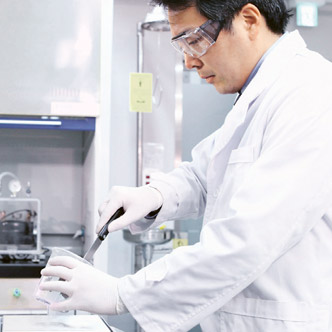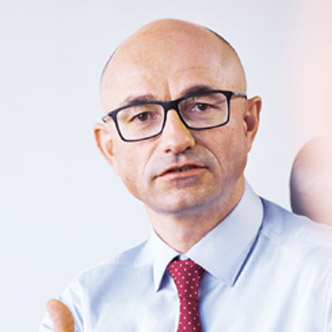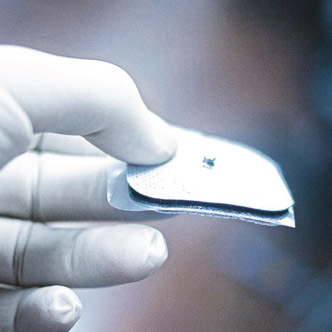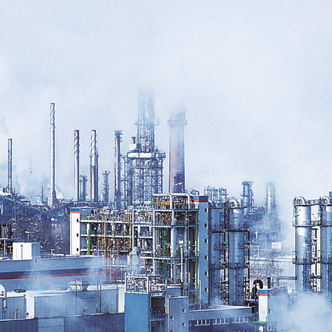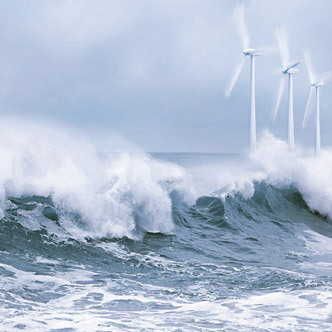Looking to the Future – Shaping Tomorrow’s Trends
3D Printing
There was an eager throng around the booth as many visitors to the 20th International Trade Fair for Plastics and Rubber – K 2016 – jockeyed to see the first industrial-scale 3D printer for silicones. WACKER was unveiling a genuine world’s first, and its business model is no less groundbreaking. Customers can upload their design to our Webshop or print it themselves under professional guidance at our Open Print Lab. The finished article is then shipped to them.
According to Wohlers Associates, an independent US consultancy, 3D processes are set to reach sales of over US$ 26 billion by 2021.
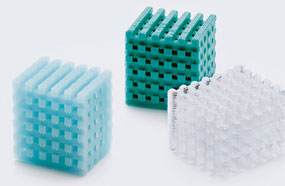
WACKER’s technology uses the “drop-on-demand” method, in which the printer head deposits tiny silicone droplets on a substrate, building up a homogeneous silicone layer extremely rapidly.
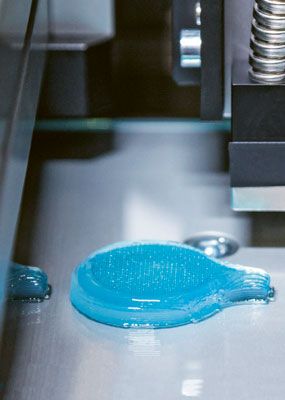
Printing then starts again on the next layer. In this way, parts with widely varying shapes, colors and hardnesses are built up layer by layer – there are no limits to the creative potential. With the aid of support material, it is even possible to print overhangs, lattice structures and complex geometries.
WACKER markets the new 3D process under the name ACEO®. It offers entirely new production and design potential. Silicone prototypes can now be printed rapidly with relatively modest technical effort – it is enough to use a computer drawing or a model generated by imaging techniques. Even spare parts manufacturers benefit from WACKER’s new technology – gaskets or other silicone components now no longer need to be made in large production runs for reasons of cost. They are simply printed on demand. Even web-based supply chains are possible – which are important for reaping the benefits of Industry 4.0. Not only major automotive and aerospace companies are interested in the innovative 3D process, but also manufacturers from the sports, leisure and life sciences sectors. The vision of printing three-dimensional objects with an industrially mature process has become reality.
Wave Power

When waves strike the quay wall sending spray high into the air, even landlubbers can appreciate the massive energy being released. According to United Nations projections, the world’s wave energy potential is 29,500 terawatt hours – more than the entire planet’s annual energy demand. Up to now, however, no systems have been available that are technologically mature enough to harness this power. Mechanical or hydraulic power stations are out of the question, since they have to be continually maintained on the high seas.
Waves store an energy potential of 29,500 TWh
So industry has taken a different approach, namely water-filled rubber tubes fitted with flexible capacitors of electroactive material. The rise and fall of the waves continually stretches and compresses these mini power stations, converting the mechanical wave energy into electrical power. The tubes are maintenance-free and extremely efficient.

WACKER supplies the key starting materials for the converters: ultrathin silicone films. They are the only materials with the right electrical properties and are also extremely flexible and maintenance-free.
WACKER is the only company in the world to manufacture this precision film in large quantities. The first prototypes with the WACKER material are already being tested, and the first power stations should be ready for service within a few years. Wave converters made of silicone should then be able to generate electricity from the inexhaustible rise and fall of the waves.
Every top athlete knows that the only way to reach peak performance is to never stop working on yourself. Those who don’t will fall behind.
120 processors, 8 million points – 10 seconds of real time takes 3 weeks to compute
Exactly the same principle applies at WACKER. Five decades ago, we started manufacturing pyrogenic silica. This colorless powder – highly pure amorphous silicon dioxide – is to be found in many day-to-day products.
It thermally insulates refrigerators, controls the flow of paints and adhesives, prevents toner from forming lumps, and makes silicones as solid as rubber.
WACKER is now the world’s No. 3 manufacturer in this business, and demand for HDK®, as the product is called at WACKER, continues to rise. Chemists and engineers in Burghausen are therefore developing the perfect reactor. Their goal is to increase yield, produce HDK® in even better quality, and slash manufacturing costs.
Pyrogenic silica is produced in an oxyhydrogen flame at over 1,000 °C. To understand how the process works, WACKER researchers have developed a computer model in which 120 processors compute over eight million points in every run. Ten seconds of real-time process takes up to three weeks to compute, with the high-performance computers working around the clock.
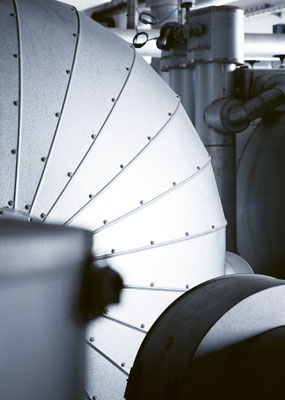
The effort is worth it, however. These computer models have allowed WACKER to build a pilot reactor in Burghausen, where tests are now being carried out that will benefit all WACKER’s HDK® plants, including the new production facility in Charleston, Tennessee (USA).
R&D

Where do innovations come from? They emerge from knowledge, creativity and persistence, and the determination to improve things. At WACKER SILICONES, over 400 employees – about 10 percent of the division’s workforce – are working on tomorrow’s products. Silicones have exceptional chemical and mechanical properties, giving them a more diverse range of applications than almost any other material, and are an important source of our future growth. Currently, over 100 research projects are in progress at WACKER SILICONES – a strategy that is paying off. The new-product rate, i. e. sales of products that are less than five years old, is growing three times faster than business with our longstanding silicone grades.

2017
Ann Arbor
Another success factor is the internationalization of our R&D work. Our three-step model consists of technical competence centers, WACKER ACADEMY and international research centers. Our new lab in Ann Arbor (Michigan, USA) is the latest addition to our global silicones research network. In mid-2017, we will begin developing innovative products there for markets in North, Central and South America, including applications and solutions for the healthcare, medical, electronic, life sciences and coatings industries. Covering 1,000 square meters and featuring its own analytical facilities, the huge lab complex is located close to the University of Michigan – one of the most reputable in the USA. The blend of science, numerous start-ups and well-established companies offers just the right climate for developing new applications and products. The goal is clear: WACKER wants to continue to grow in the world’s second-biggest chemical market.
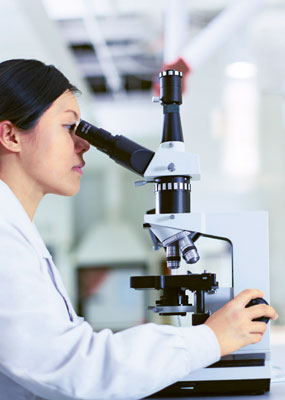
WACKER’s Silicon Chemistry Institute at the Technical University of Munich

WACKER also benefits from the expertise of external specialists and scientists. That is why, together with the German elite university TU München, we created the internationally unique Institute of Silicon Chemistry over a decade ago. Silicon chemistry is still a young field, whose potential is by no means exhausted. Key megatrends, such as information technology, renewable energy generation and electromobility, would be completely unfeasible without silicon chemistry. Our goal is to combine the latest research findings with WACKER’s experience and knowledge gained from over 70 years in the field of silicone research. The first fruits of this union of science and industry are impressive: over 30 research projects, ten new patents and 35 scientific publications.
WACKER carried out pioneering work some 30 years ago when it set itself the goals of promoting progress in silicon chemistry, kick-starting new research strategies, and facilitating product innovations. We created the WACKER Silicone Award with the aim of fostering outstanding research work in the field of organosilicon chemistry. It is among the most important international awards in this sector. So far, 19 international researchers have received the Silicone Award. The latest winner is Professor Alexander Filippou, silicon researcher at the University of Bonn, who was able to accept the award personally in September 2016 at the European Silicone Days in Poznań, Poland.

